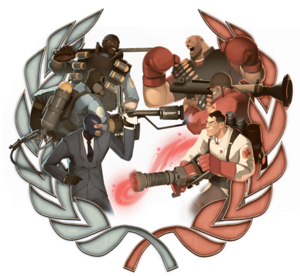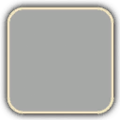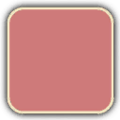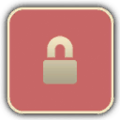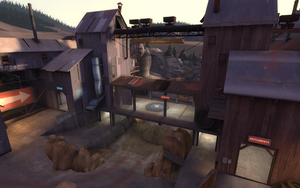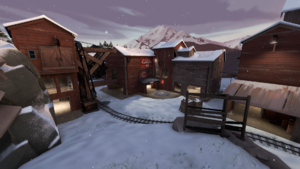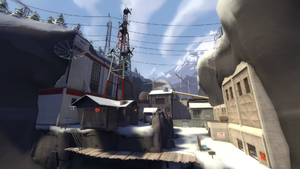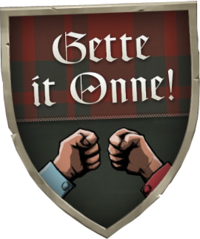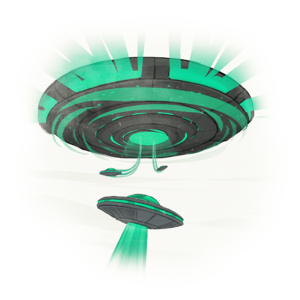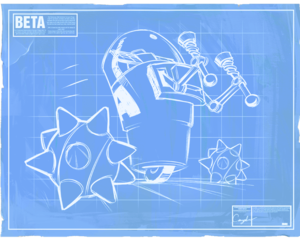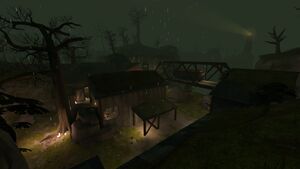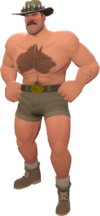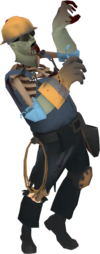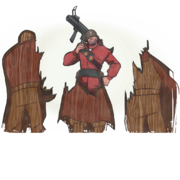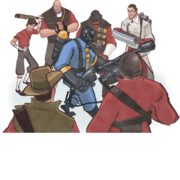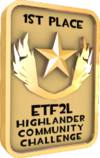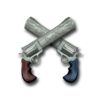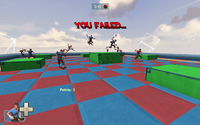List of game modes
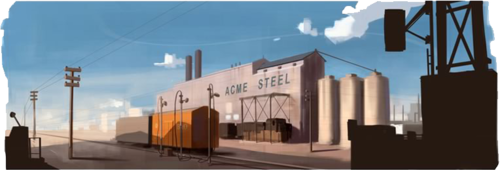
This is a list of game modes in Team Fortress 2. Initially, the game shipped with only three game modes: Capture the Flag, Control Point, and Territorial Control. Numerous updates have added several more game modes (Payload, Arena, King of the Hill, Payload Race, Medieval Mode, Special Delivery, Mann vs. Machine, Robot Destruction, Mannpower, PASS Time, Player Destruction, Versus Saxton Hale, Zombie Infection, Tug of War, and Hold the Flag) making 19 official game modes, along with 2 training maps. These game modes are spread across over 210 maps within the game and offer a great variety of play styles and games in Team Fortress 2.
Contents
- 1 Arena
- 2 Capture the Flag
- 3 Competitive Mode
- 4 Control Point
- 5 Attack/Defend
- 6 Medieval Mode
- 7 King of the Hill
- 8 Mann vs. Machine
- 9 Mannpower
- 10 PASS Time
- 11 Payload
- 12 Payload Race
- 13 Player Destruction
- 14 Robot Destruction
- 15 Special Delivery
- 16 Territorial Control
- 17 Tug of War
- 18 Hold the Flag
- 19 Versus Saxton Hale
- 20 Zombie Infection
- 21 Training Mode
- 22 Highlander
- 23 Dueling Mini-Game
- 24 Tournament Mode
- 25 Community Modes
- 26 Unused content
- 27 See also
- 28 References
Arena
| “ | I say this to you with the unvarnished factualism of plain talk: I love Arena Mode.
— Abraham Lincoln, Second Inaugural Address, 1865
|
” |
Arena maps are designed to keep the class diversity of Team Fortress 2 while focusing goals around combat between two teams. Whereas other game modes lean towards a broad, overall strategy for the team, Arena concentrates on the specific tactical choices the teams make in a single fight. Arena maps carry the arena_ prefix.
Arena Mode features smaller maps to ensure shorter matches because players do not respawn after death. When a player dies in Arena Mode, they enter spectate mode until the round is finished. The maps usually feature a control point in their center and tend to be just normal King of the Hill maps with no respawn.
Sometimes, if the teams are unbalanced, a message appears to two people, reading "Careful! If you lose this round you might have to sit out the next!", and if their team loses that round, the player becomes a spectator until the upcoming round.
Loadouts changed during the countdown before the match do not do so in-game unless the player commits suicide. Changing classes and back also works if done before the countdown ends.
The First Blood buff is unique to Arena Mode. If a player gets the first kill of a round, they are temporarily awarded full Critical hits.
Arena Mode is not found in Casual map selection.
Arena maps:
Capture the Flag
| “ | Wave goodbye to ya secret crap, dumbass!
Click to listen
— The Scout
|
” |
Capture the Flag features both RED and BLU bases, each containing their own Intelligence briefcase (also known as the "flag"). The goal for both teams is to capture the enemy's Intelligence to reach the game's capture limit (default limit is 3 captures) while preventing the enemy team from achieving the same.
Both teams' Intelligence briefcases are typically located deep within their territory, usually in a symmetrical location from each other, in an area known as the "Intelligence Room". To pick up the Intelligence, the player must touch the enemy's briefcase. While holding the enemy's Intelligence, the player must bring it to the location of their Intelligence, where they must enter their 'capture zone' (indicated by the yellow and black lines) in order to successfully capture it. After each successful capture, the team that captured the opposing team's intelligence is rewarded with ten seconds of Crit boost.
If the Intelligence carrier is killed or the Intelligence is intentionally dropped, the Administrator informs the teams over the loudspeaker and the Briefcase remains stationary for 60 seconds, with a timer shown above the Intelligence indicating how much time is left before it is returned to the Intelligence room. During that time, the Intelligence can be picked up as normal. Each time the Intelligence is picked up, and then dropped, the timer is reset to 60 seconds. The enemy is unable to reset or move the Intelligence themselves. The Intelligence cannot be carried by players with an invulnerability buff (i.e. players under the Medi Gun's ÜberCharge and Scouts under the effects of Bonk! Atomic Punch) and Intelligence carriers cannot receive an invulnerability buff or use Teleporters. Engineers wielding the Eureka Effect can teleport, but drop the Intelligence at the spot they teleported from. The Intelligence also may not be picked up by a Soldier wielding the Rocket Jumper or a Demoman using the Sticky Jumper. Cloaked Spies cannot pick up the Intelligence until their Cloak has been turned off. However, if a Spy does acquire the Intelligence, they lose their disguise and are no longer able to change their disguise or Cloak. An exception to this is the Dead Ringer, which, upon taking damage, forces the Spy to drop the Intelligence and Cloak as normal.
If the Intelligence carrier dies in a normally inaccessible part of the map, such as falling into a pit or off a cliff, the Intelligence is immediately returned to its starting location in the Intelligence room. If no team completes the capture limit before time runs out, the match enters a Stalemate.
The map Crasher uses a unique spin on this game mode, in which the teams must instead take their own "intelligences" (reskinned as explosive barrels) to the enemy base.
Unlike variants of Capture the Flag in other games, players may make a capture without actually having Intelligence at their base.
Capture the Flag maps:
Competitive Mode
| “ | At least you didn't disappoint me more than usual.
Click to listen
— The Administrator
|
” |
Competitive Mode is an official game mode released for Team Fortress 2. The mode is accessible only by having a Premium TF2 account and Steam Guard Mobile Authenticator enabled, owning a Competitive Matchmaking Pass, or owning a Community or Self-Made quality item. If a player has a Premium account but has had a VAC ban on it, the only way to obtain access to Competitive Mode is to buy a pass from the Mann Co. Store. Like regular matches, there are no restrictions on any weapons and/or classes that can be used.
Competitive Mode maps:
Control Point
| “ | This point ain't gonna cap itself! Get over here!
Click to listen
— The Engineer
|
” |
Control Point maps have two main types of game modes, symmetrical and domination.
Control points are circular platforms with a team-colored light and hologram in the center (neutral points have a white light and hologram). To capture a point that is currently neutral or owned by the enemy team, the player simply stands on the point until the capture meter fills with their team color. The more players on a point, the faster they capture it, though only to a limited extent. Scouts, as well as Soldiers/Demomen with the Pain Train equipped, count as 2 players when capturing control points. Capture progress is not made when players of both teams are on the control point. If all the capturing players are killed or driven off before the capture is completed, the capture progress does not reset immediately, but instead slowly fades away.
There are three states for a capture point:
Symmetrical Control Point
In Symmetrical Control Point, or Linear Control Point, both teams start with at least 1 controlled point, and a central point starts out neutral. The team that captures all control points wins. Traditional Control Point maps go into Sudden Death (or Stalemate) if no team captures all the control points before time runs out. Control points closer to a team's spawn point are captured more quickly by the enemy team.
Symmetrical Control Point maps:
Domination Control Point
Domination Control Point maps play symmetrically. Both teams start with no controlled points, and all points start out neutral. The team that captures all control points wins. Traditional Control Point maps go into Sudden Death (or Stalemate) if no team captures all the control points before time runs out. Once a team has all three points, they win regardless of how much capture progress the other team has.
Domination Control Point maps:
Attack/Defend
| “ | Next time you'll bloody ask before you stand on my point.
Click to listen
— The Demoman
|
” |
Attack/Defend is a game mode in which RED begins with all the points in their control and BLU wins if it captures all of RED's points. Generally, the control points may only be captured in a set order. RED wins if it prevents BLU from capturing all points before the timer expires. Points captured by BLU are locked and cannot be captured again by RED.
Attack/Defend maps can come in various styles. Some maps, such as Dustbowl and Egypt, require the BLU team to capture three stages of two control points each to win the game. If the attacking team fails to win any stage, teams switch and the defenders then take a turn as the attackers, beginning with stage 1. Other maps, such as Gravel Pit and Junction, allow the attacker to capture two points in any order (points A or B) before attacking the final point (point C). Steel is a unique Attack/Defend map in that capturing each minor capture point (points A, B, C, and D) allows better accessibility to the main point (point E), such as allowing more routes into point E or extending bridges to the point so that classes without special jumping techniques can capture it. This means that one unnoticed Scout can capture and win games without the team even realizing.
Attack/Defend maps:
End of the Line Attack/Defend
End of the Line Attack/Defend was added during the Gun Mettle Update. Unlike traditional Attack/Defense maps, the map objective centers around a train carrying a Payload, though it does not function like a Payload map. The BLU team's goal is to escort the train to the end of the map by capturing three control points on each stage, for a total of six. At each control point, the train is impeded by a buffer stop, where a RED device attacks it every 35 seconds that it is stationary. This countdown is paused whenever the control point is being actively contested, and resets when the control point is captured by BLU.
For every 35 seconds that BLU fails to capture or contest the active control point, the train loses 10% of its health. When BLU successfully captures a control point, the train restores 10% of its health, destroys the buffer stop, and proceeds to the next control point, where the next countdown begins. The train's health carries over between stages, so it is not refreshed upon completing the first stage. BLU wins if they successfully capture all control points on each stage before the train is destroyed, while RED wins if they hold the control points long enough for the devices to destroy the train.
End of the Line Attack/Defend maps:
Attack/Defend Capture the Flag
Attack/Defend Capture the Flag is a type of Attack/Defend map in which the BLU team cannot capture the control point without holding their Intelligence briefcase. These capture points are instantly captured upon a member of the BLU team carrying the intelligence comes into contact with them unless a member of the RED team is standing within the capture zone, rather than being slowly captured over time. The Intelligence briefcase spawns on the BLU side of the map and moves up on the map when a control point is captured. If a player dies with the Intelligence briefcase it has a 15 second timer before it is returned to the point where it spawned. If a player dies in an inaccessible area of the map the intelligence is instantly returned to the point where its spawned.
Attack/Defend Capture the Flag maps:
Medieval Mode
| “ | How did the manly men of Team Fortress 2 appear at a tenth-century battlement? Simple. The Soldier angered a magician.
— Valve
|
” |
Medieval Mode is a game mode added during the Australian Christmas update and given to dedicated Valve Servers in the April 25, 2016 Patch. It plays similar to Attack/Defend, but with one major twist: all guns are removed, and only Olde weapons can be used. Players also drop small health kits on death, in addition to a medium ammo crate. Text chat is filtered (to Olde English) to resemble the language of the era (though with considerable inaccuracy) and the map is Medieval-themed. Another main (non-cosmetic) feature about this game mode is the added feature of flaming torches located in strategic points; these torches can set Huntsman's (and Fortified Compound's) arrows on fire on contact (before shooting the arrow).
Medieval Attack/Defend maps:
King of the Hill
| “ | Since their discovery in 1895, hills have fascinated kings.
— The Classless Update
|
” |
King of the Hill is similar to Arena. King of the Hill focuses on a single control point at the center of the map, which is neutral and locked at the beginning of the round. Teams must make their way to the control point and capture it when it becomes available. Once the point is captured by a team, their team clock starts a three-minute countdown. If the enemy team manages to capture the point back, their clock starts counting down while the other team's clock freezes at the time the point was recaptured. A team wins once they own the point, the three minutes countdown expires, and the other team's capture progress is gone.
King of the Hill maps:
Mann vs. Machine
| “ | More rubble, less trouble!
Click to listen
— The Heavy
|
” |
Mann vs. Machine is a game mode that was released in the update of the same name. In this game mode, a team of three to six players must fend off a horde of robots attempting to carry a bomb to one of Mann Co.'s strongholds. Upgrades and Canteen power-ups can be purchased at the spawn point using cash picked up by the players upon destroying a robot (not every robot drops cash, and the amount of cash dropped may vary according to the robot type). A bonus amount of cash is awarded to the team if all or almost all of the cash from a wave is picked up.
All classes and most weapons have different upgrade abilities, such as movement speed, charge duration, or the amount of ammo the player can hold. Surviving all the waves completes the mission. Upon the completion of a player's first mission, they receive a Canteen.
There are currently 5 operations and 29 missions (some missions are not part of any operation) in Mann vs. Machine.
Mann vs. Machine maps:
Mannpower
| “ | I hope I didn't scare you with my face-to-face man fightin'!
Click to listen
— The Demoman
|
” |
Mannpower is a modified version of Capture the Flag in which teams must capture the enemy's Intelligence briefcase a set number of times (default limit is 7 captures) while preventing the enemy from doing the same. The game mode is characterized by its usage of grappling hooks and twelve unique Powerups.
Grappling Hooks, usable by switching to them or by pressing the action key, latch onto the surface the player is looking at, whether it be a wall, floor, ceiling, or even an enemy. Once attached, players are automatically reeled in, traveling through the air in a straight path to the desired location. If the grappling hook is attached to an enemy, the enemy takes bleed damage until the player dies or releases the hook. Players can jump while grappling, giving them a boost to scale ledges. While the player is using the grappling hook, they cannot fire their weapons.
Powerups provide passive buffs (with the exception of Supernova) to the players who pick them up. These buffs range from increased movement speed to reflecting damage back at the enemy. At the start of each round, a set number of Powerups spawn throughout the map and can be picked up by players from either team. When a Poweruped player is killed, they drop the Powerup in the color of the enemy team, restricting their teammates from claiming it directly after the player's death. If colored Powerups are not picked up after a certain time period, they respawn in the appropriate team's base. Players can deliberately drop Powerups with the same key used to drop the Intelligence briefcase. If they do so, the Powerup is neutral instead of team-colored.
Mannpower currently runs on modified ctf_ versions of Gorge, Foundry, and Thunder Mountain, as well as a map made specifically for the mode, Hellfire. Whenever players respawn, they are given a few seconds of invulnerability. Unlike standard CTF maps, where the Intelligence briefcases are located in "Intelligence rooms," briefcases in Mannpower mode are out in the open and susceptible to theft from many directions. However, the timer that appears when the Intelligence is dropped does not reset if it is picked up and dropped again, making capturing the Intelligence harder. Additionally, players with a Powerup receive a 25% hook movement speed penalty when carrying the Intelligence, and players without one gain health regeneration. After a team successfully captures the Intelligence, both capture zones are disabled for 30 seconds. If a team imbalance is detected, the losing team gets a "Revenge" Powerup, granting them temporary Crits, increased fire rate, and increased clip size. Flags become poisonous and mark the carrier for death 90 seconds after having been stolen. If both teams flags are stolen and poisonous, they return when next dropped.
All melee weapons do an additional 30% damage, but Demomen equipped with a shield do not receive this bonus. Random Critical hits are disabled.
List of Powerups:
- Strength - Double damage for all weapons. Distance damage fall-off immunity. Doesn't stack with Crits.
- Resistance - Reduces incoming damage by 50%. Immune to Plague, Reflect and blocks backstabs.
- Vampire - All damage dealt is returned as health. Flamethrowers and Miniguns have reduced health leeched from damage done. Melee attacks returns 1.25x damage as health. 25% damage resistance. Max health increased by 80.
- Reflect - 80% of damage received is reflected back to the attacker (reflected damage cannot directly cause death). Max health increased to 400. 100% of received Sentry damage is reflected back to the Sentry Gun.
- Haste - Double weapon firing and reload rate. Double clip size and max ammo count. Movement speed increased by 30%. Sticky bomb arm time reduced. Double Ubercharge gain.
- Regeneration - Ammo, health, and metal regenerate. The rate of health regeneration is inversely proportional to max health.
- Precision - Greatly reduced bullet spread. Distance damage falloff immunity. Rocket and grenade travel speed increased by 250%. Sniper rifles have quicker damage ramp-up and re-zoom after shooting, and have double damage. Increased blast weapon clip size by 50%. Explosive projectiles have no radius damage falloff. Immunity to self-blast damage.
- Agility - Movement speed increased by 50%. Grapple speed increase. Jump height increased by 80%. Instant weapon switch. Immune to fall damage. Reduced grapple movement speed bonus when carrying the intelligence.
- Knockout - Restricts the carrier to Melee and Grappling Hook only. Max health increased by 150 except for Heavies and Demomen wielding a sword, a shield, or both, gaining only 120 health, 130 health, 80 health, and 20 health, respectively. Immune to airblast and damage pushback. Melee weapon deals 190% of base damage and forcibly shoves the victim away (Doesn't stack with Crits). Melee hit forces the victim to drop their Powerup or the flag if they have it. 4x melee damage to buildings. Collects health pack health without subtracting their health bonus. Shield Charge cooldowns are greatly increased.
- King - Increased max health. Small health regeneration, fire, and reload rate increase. All effects except maximum health increase are shared by nearby teammates, though the regeneration buff is only applied to teammates and enemy Spies who also have Powerups. Regeneration effect is inversely proportional to maximum health.
- Plague - Radius health kit collection. Touching an enemy gives them and their nearby teammates the plague. Plague victims bleed to death in 10 seconds unless they pick up a health kit or touch a resupply cabinet. Plague blocks King's health regeneration and team buff.
- Supernova - Discharge a supernova attack (grapple secondary fire) to briefly stun nearby visible enemies. Requires full Powerup meter. Powerup meter fills over time, or by dealing damage. Stunned enemies drop their Powerups, and are pushed away from the supernova attacker. Once discharged, the Supernova Powerup disappears and respawns. When the Powerup meter is full, enemies glow when in range.
- Critical hit - Temporary full Crit power for 30 seconds. Respawns in the same place after 60 seconds.
Mannpower maps:
PASS Time
| “ | Play ball!
Click to listen
— The Scout
|
” |
PASS Time is a game mode for Team Fortress 2 that combines the traditional combat in the game with sports elements of football (soccer in-game), hockey, and basketball. It is a heavily team-based game mode and it is critical that players use teamwork when playing it. There are many perks and jump pads to assist the players. If the match ends in a tie, Sudden Death begins. PASS Time also provides a voice command to get teammates to pass the ball to the player, who is given a speed boost and healing nearby teammates when holding the ball. PASS Time was developed by Bad Robot and Escalation Studios.
PASS Time maps:
Payload
| “ | Onward, great bomb-cart!
Click to listen
— The Heavy
|
” |
In Payload maps, BLU team must escort a cart full of explosives through a series of checkpoints and into RED's base within a certain amount of time. BLU team members move or 'push' the cart by standing next to it — the more people next to the cart, the faster it moves (up to a maximum capture rate of three). Any RED team member standing near the cart stops it from venturing further, regardless of the number of BLU team members on the cart. If no BLU players push the cart for 30 seconds, the cart starts moving backward slowly until it reaches a checkpoint, BLU spawn, an uphill slope (in certain maps), or is pushed by BLU team members again, which also resets the timer. The cart functions as a level 1 Dispenser for BLU team (and disguised enemy Spies) to restore health, ammo, and metal to those pushing it. Ammunition is not restored to players standing at the front of the cart.
Some maps have flanking routes that open when a specific point is taken.
There are two distinct types of Payload missions; the type depends on the map. Some Payload maps, including Gold Rush, Hoodoo, and Thunder Mountain, are multiple-staged and play similarly to Dustbowl by splitting the mission into three sections, each with multiple checkpoints. Capturing the final point on the last stage results in BLU blowing up RED's base, often with a spectacular explosion wiping out everyone around the bomb cart. Time is added whenever BLU captures a non-stage-winning point.
The other type of Payload mission, an example being Badwater Basin, is single-staged, similar to Mountain Lab, and has all checkpoints within one long stage, with larger time bonuses for BLU upon successful captures. There are also fewer total checkpoints, resulting in three or four checkpoints and a final point, where BLU can win the game and blow up RED's base.
Single-stage Payload maps:
Multiple-stage Payload Maps:
Payload Race
| “ | Two teams. Two bombs. Two tracks. Hilarity ensues.
— In-game summary
|
” |
Payload Race is a game mode in which both the RED and BLU teams are issued with cart; neither team is restricted to an attacking or defending role, with both teams assuming characteristics of both roles. To win, each team must simultaneously push their cart through enemy territory to reach the final point while preventing the enemy team from doing the same. As with Payload mode, team members push the cart by standing next to it, with more members increasing the speed of the cart and opposing team members halting it.
Unlike Payload, the cart does not move backward after any duration of time and there is no time limit; the map only ends when one team successfully pushes their cart to the finishing point. Each cart works as a level 1 Dispenser for their team (and disguised enemy Spies), restoring health, ammo, and metal to those pushing the cart. Parts of the track may feature slopes on which the cart quickly rolls back down to the bottom unless it is being constantly pushed. In many maps, there are uphill pushes. Should the cart pushers be killed or move away from the cart, the cart slides down the ramp to its original state.
Payload Race maps may be split into multiple rounds.
Payload race maps:
Player Destruction
| “ | I believe I will buy you a beer!
Click to listen
— The Engineer to drunk UFO pilots
|
” |
Player Destruction is a community-created game mode added as part of the Invasion Community Update. This game mode focuses on teams collecting a special pickup by killing enemy players and then accessing the map's delivery zone in order to add them to their scores. Whenever a player is killed, they drop all their currently held pickups, which can be picked up by both teams.
The player on each team with the largest amount of pickups provides health and ammo equal to a Level 1 Dispenser to themselves and nearby teammates, but their outline and the number of pickups they possess are constantly visible to both teams.
Player Destruction maps:
Robot Destruction
| “ | Oh, I vill tear you apart, bolt by bolt!
Click to listen
— The Medic
|
” |
Robot Destruction is a game mode that has not yet been officially released. However, it can be played by setting up a beta server. So far there is only one known map using this game mode. This map takes place on a moon base map Valve mentioned and showed concept art for in an earlier TF2 update post. The game mode is similar to Capture the Flag, but instead involves destroying enemy robots and stealing their power cores. Once stolen, power cores (unlike a normal Intelligence briefcase) are instantly stored in a vault once touched. A team can go to the enemy vault and take their power cores back to slow down the other team from winning. The map itself is not finished with, as there is a lack of proper textures, but does include new robot NPCs that have brand new textures (aside from a few using the ÜberCharge texture showing that it is locked, but it is assumed that it is only a placeholder).
Robot Destruction maps:
Special Delivery
| “ | Gentlemen, today we launch a monkey into space.
Click to listen
— The Administrator
|
” |
Special Delivery is a game mode released as part of the Pyromania Update. In this game mode, an initially neutral briefcase must be transported to the top of a lift before the opposing team can do the same.
If a player picks up the briefcase and is killed while holding it, only players from the same team as its recently-deceased carrier can pick it up again. If the team fails to do so within 45 seconds, the briefcase is sent back to its original position and reverts to neutral.
The player who has a hold of the briefcase must stand on the lift all the way up and deliver it to the goal at the top. In Doomsday, the player has to remain on the platform until the compartment hatch of the rocket fully opens and is ready to receive the briefcase.
Special Delivery maps:
Territorial Control
| “ | We have you surrounded, at least from this side!
Click to listen
— The Soldier
|
” |
In Territorial Control, the goal is to take over the entire map by capturing "territories". Each game is randomly selected from the six available layouts in a 'point against point' game where both teams must capture the opposite point while defending their own. After a team successfully captures the opposite point, the next round takes place in a different area of the map which is also randomly selected. After a team captures all four territories, that team must capture the enemy team's base. If the base point is captured (in Hydro, the Radar Dish for RED, the Power Plant for BLU), the attacking team wins the game. When the next round begins, territories are reset and a new random layout is selected.
In any game in TC (except in RED/BLU base games), if a control point is not captured before the eight-minute time clock reaches zero, the game goes into Sudden Death mode.
Territorial Control maps:
Tug of War
| “ | It's not a race, it's a war!
Click to listen
— The Administrator
|
” |
Tug of War is a game mode released as part of the Scream Fortress XVI update. In Tug of War, there is a single cart that starts as neutral at the beginning of a round and must be pushed to the other team's base. The cart in this game mode is similar to the control point in King of the Hill, as it requires a team to take control and capture it before being able to progress towards victory. After that, team members push the cart similarly to Payload by standing on top of it, with more members increasing the speed of the cart and opposing team members halting it. When one team successfully holds the cart at the opposing team's checkpoint for long enough, they win.
The cart works as a level 1 Dispenser for the controlling team (and disguised enemy Spies), restoring health, ammo, and metal to those pushing the cart.
Tug of War maps:
Hold the Flag
| “ | ” |
Hold the Flag is a game mode released as part of the Scream Fortress XVII update. In Hold the Flag, there is a single Intelligence briefcase that starts as neutral at the beginning of a round which one team must hold for the specified amount of time. Dropping the briefcase does not reset the timer. If the any team member is able to hold off the enemy while holding the flag for long enough, they win.
Hold the Flag maps:
Versus Saxton Hale
| “ | What is VS Saxton Hale? It's in the name! You fight Saxton Hale! Or you play as Saxton Hale and fight the Mercenaries. Are you ready to face 23 enemies at once? ‘Cause they surely aren’t ready to face you!
— Publicity blurb
|
” |
Versus Saxton Hale is a game mode released as part of the Summer 2023 Update. Similar to the Arena game mode, it features one player controlling Saxton Hale on the BLU team, and all other players on the RED team attempting to defeat him. Saxton has several moves that can kill most classes in a single hit, and similar to Arena, all destroyed players become spectators until the end of the round.
Versus Saxton Hale maps:
Zombie Infection
| “ | Hell zombies!
Click to listen
— The Demoman
|
” |
Zombie Infection is a game mode released as part of the Scream Fortress XV update. In this game mode, BLU plays as a horde of Zombies, while RED plays as regular Humans. If a RED Human dies, they become a BLU Zombie; if a BLU Zombie dies, they respawn as normal. BLU wins if all of RED turns into Zombies, while RED wins by surviving for long enough.
Zombie Infection maps:
Training Mode
| “ | My 11th PhD is in Applied Ass-Kicking!
Click to listen
— The Engineer
|
” |
Training Mode maps are intended to teach the basics of gameplay and advanced techniques on wooden targets and bots. Training Mode shipped with the Mac Update, which introduced two official training maps. The Offline Practice allows for new and unfamiliar players to train on specific game modes, along with the capability to adjust the difficulty scale of bots to suit the player.
Training Mode maps:
Brandon Reinhart indirectly announced on the Official TF2 Blog on July 28, 2010, that Corey Peters was currently working on another official training map,[1] though details remain unknown for which class or what gameplay mechanics were being focused on.
Current training classes are:
Highlander
| “ | There can be only one!
Click to listen
— The Demoman
|
” |
Highlander mode restricts the number of players of each team to 9 players and only allows one player per class on each team. It is applicable to any game mode and can be activated by entering mp_highlander 1 into the console.
The idea behind Highlander mode existed previous to its official inclusion in the game and had been implemented in server mods. Highlander mode was officially added in the February 3, 2010 Patch.
The game mode's name is a reference to the Highlander film series, where the phrase "There can be only one" was often repeated; this references the limitation of one player per class.
Dueling Mini-Game
| “ | Let's settle this like gentlemen!
Click to listen
— The Spy
|
” |
A mini-game released in the Mann-Conomy Update, the Dueling Mini-Game is an Action item that can be purchased in the Mann Co. Store, received via trading, or found via the item drop system. When loaded into the action slot, the item can be triggered to put the user against one person on the opposing team, provided they accept the challenge. Until the end of the round, points are gained by killing or assisting in a kill against the other person. Kills of the two players dueling are tracked, and the player with the most points wins the "duel" when the round ends. If one of the players disconnects or leaves the match, a short duel ban is issued to that player. The item itself has a maximum of 5 uses and is usable on all official maps. After a player participates in their first duel, a Bronze Dueling Badge is granted, which levels up to Silver, Gold, and finally Platinum as they gain more wins. For every 10 wins, an extra Dueling Mini-Game is granted. Every day, a unique cosmetic item, the Dueler, is given to the player who won the most duels the previous day.
Tournament Mode
| “ | Dominated, hippie! Get a job!
Click to listen
— The Soldier
|
” |
Tournament Mode is used mostly on competitive servers. It allows for the creation of custom teams, and the ability to track the success of a particular team over multiple games. A user interface is present for naming teams, and once team members have been organized, teams must say they are ready to start the game. In Tournament Mode, there are no player limits for either team and no autobalancing.
Similarly to Highlander, Tournament Mode is applicable to any game mode and can be activated by entering mp_tournament 1 into the console.
Community Modes
| “ | Never bring a bat to a battlefield, war is not a game.
Click to listen
— The Soldier
|
” |
Community game modes/mods are custom, unofficial game modes, produced by various community members. They vary from remakes of Team Fortress Classic game modes to completely original modes like Smash Bros. and may change anything about the way a class works from their core mechanics to the weapons they carry. Some modes even add new enemies for the RED and BLU teams to fight or put the player in the shoes of someone or something they couldn't play in an official mode. Some game modes/mods have been honorably mentioned by Valve on the TF2 Official Blog and VS Saxton Hale has even made it officially into the game.
Unused content
Courier
There was a planned Courier game mode in development which for unknown reasons was scrapped. There is still an existing Announcer voiceline in the files which was going to be used in this game mode and the class Civilian that used to be joinable with commands. The December 20, 2007 Patch prevented this from being possible.
Raid
There are several unused game logic options found in Hammer. tf_logic_boss_battle, used for an extension of the Raid game mode, or tf_logic_raid. In this game mode, a player would be on a team with 4 other players against hordes of bots, similar to Left 4 Dead.
Gasworks
The only evidence of this game mode is a logic option called tf_logic_gasworks, removed as part of the December 22, 2014 Patch. It was likely a deathmatch-esque mode, given that it shares a name with Gasworks (Classic).
See also
References
| |||||||||||||||||


